Colorado Dreaming’s Ultimate LED Guide
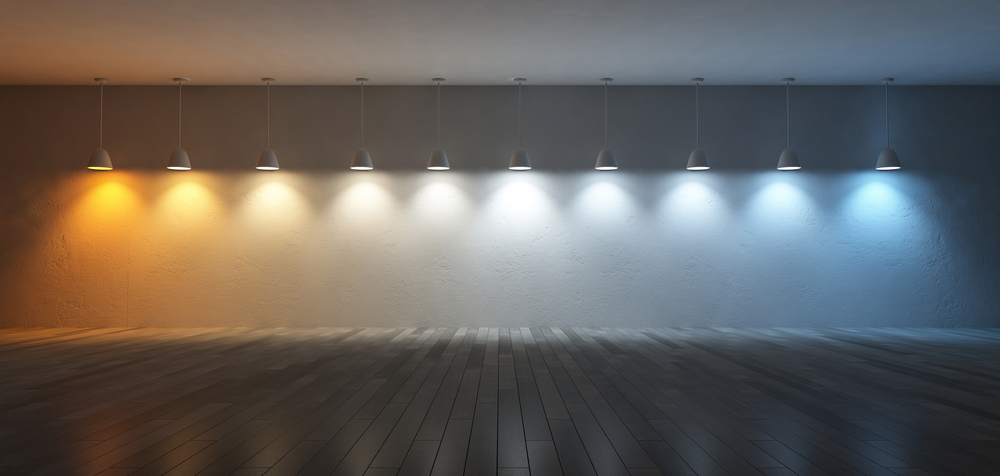
So here we are. We decided to grow some weed and all your research shows you the left hand doesn't know what the right is doing. Meanwhile, all you want to want to know is what lights will work best for your grow without damaging your new babies. Well you have have found the right place. Especially if you want just the facts and no bullshit salesman gimmicks or sci-fi scientist talk.
With that being said, there are a few basics we must cover and I will do my best to explain them in layman stoner terms. Also to avoid confusion, discount everything else you have read. You will find most of it aligns with what I have to say however there are some misconceptions which I will address. If you wish to be extra lazy, and want someone else making your decisions vs being informed, feel free to jump down to the Buying guide section.
Science Shit
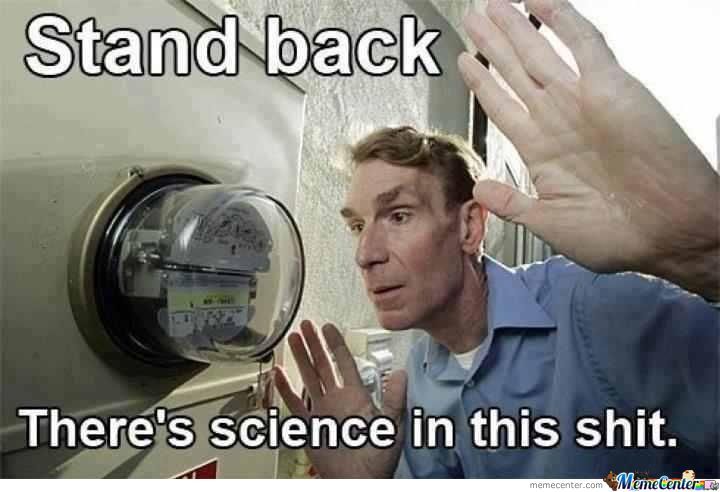
So there are some terms you may have heard. Par, PPFD, Quantum Board, Cob , Lumens, Watts and your over here like “Watt” the fuck lol. This is okay. Going in to this shit I felt the same way. I do have a background in optics, including light wavelengths etc. which may have helped me but not much. With that being said let's come to terms.
There are several ways to measure light. But which is right? The short answer, when it comes to horticulture is PPFD, and I would never buy from a lighting company/distributor that does not supply a full ppfd plotting map. ( more on this latter) Let me explain why by breaking down the bullshit others throw at you. Let's start with laymen definitions of the terms.
3 Rules on choosing lights
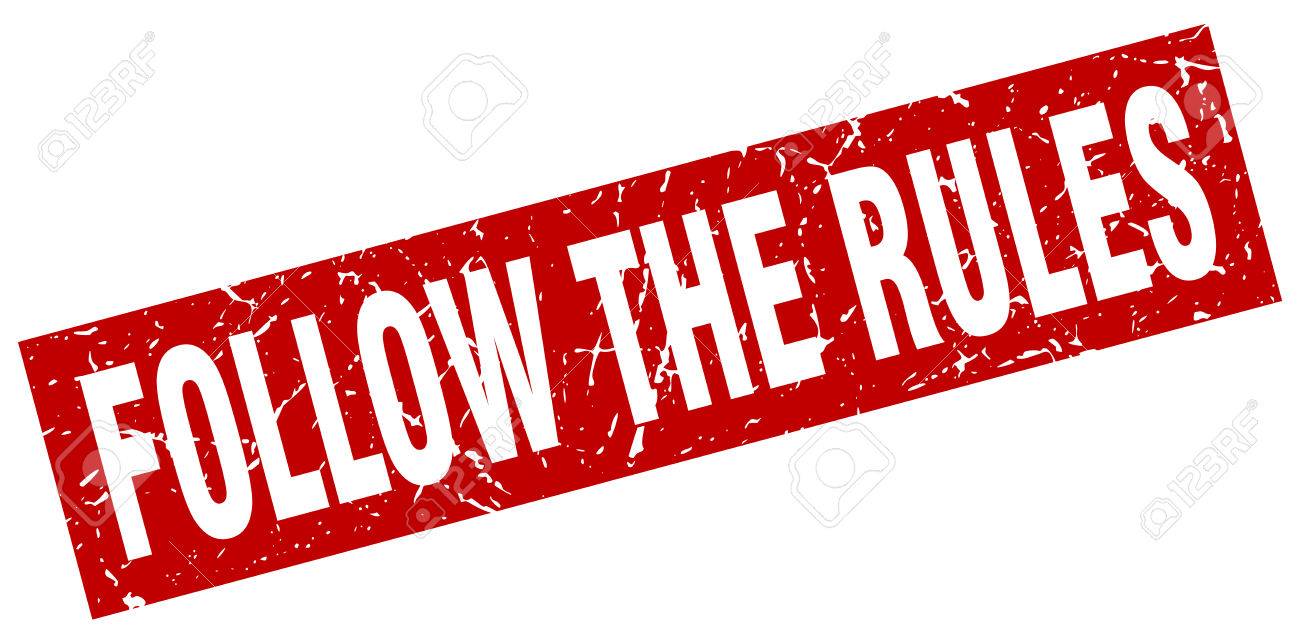
Okay, now that we have most of that out the way you are probably wondering what does all this mean or how can I use any of this information to buy the light I want? Well we can use this info to provide a few simple ground rules for shopping for a light. Which I will lay out and then briefly explain.
Like I mentioned before, electric doesnt grow plants, light does. So why would we care how much electric our lights are using unless we counting pennies. Don't be fooled by anyone selling you on the watts of a light.
Don't be tricked by companies claiming they have the perfect “Spectrum” of lighting. Or that their light mimics the sun. This is all gimmick shit. In simple terms you want something around 3000k ( More red wavelength) and 4000K (More Blue). To make it supper easy go with 3500K and you can't go wrong.
Whoa, whoa, whoa. I thought you said this was going to be simple? Relax. It is. Basically a lot of companies will give you “features” laid out in list format. This is great for a quick comparison. But at the end of the day we want to make sure we got adequate coverage for all our plants. We will get to what numbers to look for in a minute. But for now, just know that a bigger number is better. Look below.
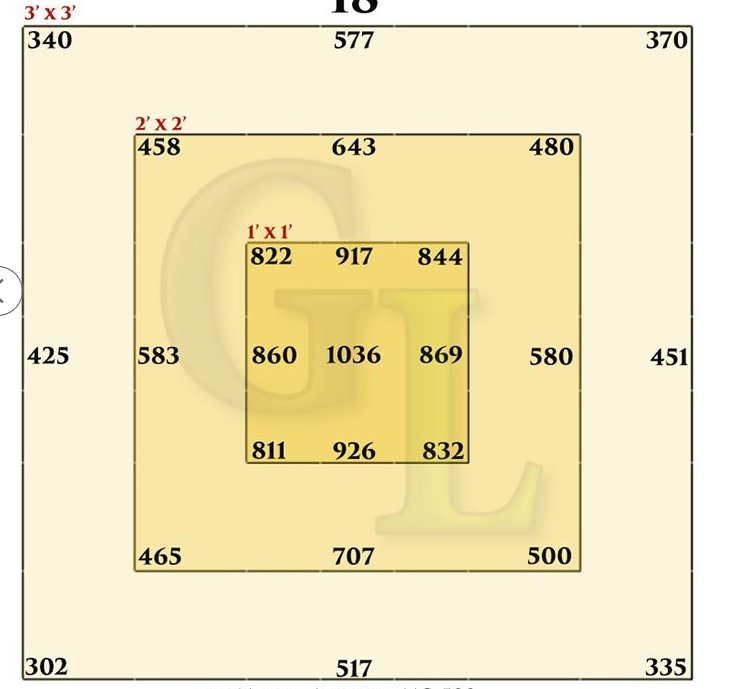
This above is taking from a Quantum LED board. Notice how the numbers in the middle are highest and get lower almost uniformly as we get further away from the center. This is very typical of a quantum board and as I mentioned above they may be best for covering a large area.
The Picture below is a PPFD plot a COB. Notice the higher numbers in the middle but see how the numbers quickly drop off on the edges. ( with the exception on a line across the middle due to refractors, which are not covered here.) This makes COBs idea for growing in tight spaces or only 1 or 2 plants per light.
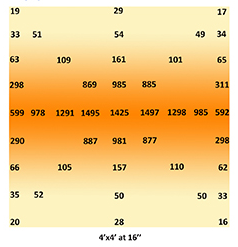
Still with me? Alright fantastic. So far we have covered; weeding through science lingo, what not to buy or what to look out for, and started to look at what you should be looking for. This next part we will talk more specific in numbers and I will make some recommendations on some actual lights.
Buying guide
So let us get right into it. First thing is first, there isn’t a “one size fits” all. Errrr. I hate this expression because anytime I hear it I know shit isnt going to be as simple as I want it to be. It doesn't have to be complicated either though. Because there are enough universal rules that we can safely pick a few lights that will fit almost everybody's needs.
If you are just joining us and skipped “science shit” just relax for a minute, don't think to hard and we will get into recommendations soon enough.
If we look back at the examples of the PPFD plots from before we can see now, taking into account plant space, the limitations of the 2 style of lights. Now these would be ideal conditions and it is very common to be below these ranges in parts of your grow space. So don't fret if your doing math on some lights you've seen and are now thinking you need 3 of them and the toll it’s going to have on your wallet. PPFD ranges even as low as 200 will grow plants just fine. You also can add additional lighting and quickly get where you want from where the light overlaps.
Well at some point we reach like a “light saturation level” Where the plants will stop using it. This is somewhere between 800-1000 PPFD typically. Depending on your grow environment if you can supplement CO2. Which a lot of growers do, you can actually get your plants to use numbers as high as 1500. But we are not going to get into all that. Just know that your not going to hurt your plants, but you are wasting energy by going for any more than that.
Im serious people. The age of the “Blurple” is over. There is still a lot of science to be found out about how plants use light. But just know they use all of it, if you are only giving your plants blue and red they are missing key components needed to grow optimal. Buy a full spectrum white light and if you want you can supplement it with narrow spectrum lighting. I’m not going to tackle the subject of that in this guide quite yet. Maybe down the rode.
This about covers most of the basics and the main mistakes and misconception when it comes to buying a LED light. At least that I can think of at this time. I will definitely update and provision this guide as time goes on. But I really wanted something out there like this since I spent weeks reading science articles and studies just to figure out some very basic shit it seems. Below are a few of my recommendations based on your grow areas for LEDS. I have no ties to any of these companies. And this isnt a comparison. I encourage you to do your own research and share any other awesome manufactures you may find. I hope you have enjoyed this article and I look forward to the feedback!
Update 2020
I really wanted to come back to this and provide some more useful information but have not had time between work and school. However I did come across a nice video on YouTube that does a good job at illustrating some of the items covered in this guide so I wanted to share it as a supplement as I know some people are more visual learners.
So here we are. We decided to grow some weed and all your research shows you the left hand doesn't know what the right is doing. Meanwhile, all you want to want to know is what lights will work best for your grow without damaging your new babies. Well you have have found the right place. Especially if you want just the facts and no bullshit salesman gimmicks or sci-fi scientist talk.
With that being said, there are a few basics we must cover and I will do my best to explain them in layman stoner terms. Also to avoid confusion, discount everything else you have read. You will find most of it aligns with what I have to say however there are some misconceptions which I will address. If you wish to be extra lazy, and want someone else making your decisions vs being informed, feel free to jump down to the Buying guide section.
Science Shit
So there are some terms you may have heard. Par, PPFD, Quantum Board, Cob , Lumens, Watts and your over here like “Watt” the fuck lol. This is okay. Going in to this shit I felt the same way. I do have a background in optics, including light wavelengths etc. which may have helped me but not much. With that being said let's come to terms.
There are several ways to measure light. But which is right? The short answer, when it comes to horticulture is PPFD, and I would never buy from a lighting company/distributor that does not supply a full ppfd plotting map. ( more on this latter) Let me explain why by breaking down the bullshit others throw at you. Let's start with laymen definitions of the terms.
- Wavelength- This is the color of the light. Plants like different colors of lights for different reasons.
- Temperature - This is a fancy way of pointing out which group of wavelength a light source is using.
- PAR - This is how much of that color light (usable) a lightsource is putting off. If our light is the sun. This is how much radiation its putting off.
- Lumens - This is how bright the light source is. We don't care at all about this one as we are not trying to see, but rather, grow weed.
- Watt - Look at this one as a measurement of how much electric does the light source use. This one may be useful if we are measuring energy efficiency. But when it comes to LEDS they are designed to be efficient. So unless we are counting pennies we can pretty much ignore this one as well. Electricity doesn't grow plants!
- Quantum Board - is basically a board with a series of high performance LED’s on it. The advantage of these is they are able to deliver a more uniform coverage area.
- COB - Is short for chips on board. Look at this as if we took a quantum board’s LEDs and push them all together in a tight spot. These are a great choice because they do a great job at growing and are relatively inexpensive. The disadvantage is if you are growing several plants over a large area, it will take several to provide optimal coverage.
- PPFD - This is the measurement of how much of that awesome light is hitting your beautiful plants that they can use to GROW! That's right. This is the one that really matters at the end of the day.
3 Rules on choosing lights
Okay, now that we have most of that out the way you are probably wondering what does all this mean or how can I use any of this information to buy the light I want? Well we can use this info to provide a few simple ground rules for shopping for a light. Which I will lay out and then briefly explain.
- Ignore watts! 1W, 3W, 5W…. 150 watts from the wall. Doesn’t mean shit!
Like I mentioned before, electric doesnt grow plants, light does. So why would we care how much electric our lights are using unless we counting pennies. Don't be fooled by anyone selling you on the watts of a light.
- All lights provide the same PAR and Temperature options. There isn't a magical formula .
Don't be tricked by companies claiming they have the perfect “Spectrum” of lighting. Or that their light mimics the sun. This is all gimmick shit. In simple terms you want something around 3000k ( More red wavelength) and 4000K (More Blue). To make it supper easy go with 3500K and you can't go wrong.
- Look for a Plot map of PPFD ranges. Not just a single PPFD number or PAR number.
Whoa, whoa, whoa. I thought you said this was going to be simple? Relax. It is. Basically a lot of companies will give you “features” laid out in list format. This is great for a quick comparison. But at the end of the day we want to make sure we got adequate coverage for all our plants. We will get to what numbers to look for in a minute. But for now, just know that a bigger number is better. Look below.
This above is taking from a Quantum LED board. Notice how the numbers in the middle are highest and get lower almost uniformly as we get further away from the center. This is very typical of a quantum board and as I mentioned above they may be best for covering a large area.
The Picture below is a PPFD plot a COB. Notice the higher numbers in the middle but see how the numbers quickly drop off on the edges. ( with the exception on a line across the middle due to refractors, which are not covered here.) This makes COBs idea for growing in tight spaces or only 1 or 2 plants per light.
Still with me? Alright fantastic. So far we have covered; weeding through science lingo, what not to buy or what to look out for, and started to look at what you should be looking for. This next part we will talk more specific in numbers and I will make some recommendations on some actual lights.
Buying guide
So let us get right into it. First thing is first, there isn’t a “one size fits” all. Errrr. I hate this expression because anytime I hear it I know shit isnt going to be as simple as I want it to be. It doesn't have to be complicated either though. Because there are enough universal rules that we can safely pick a few lights that will fit almost everybody's needs.
If you are just joining us and skipped “science shit” just relax for a minute, don't think to hard and we will get into recommendations soon enough.
- We want a PPFD around 600-800 (optimal) for growing weed.
If we look back at the examples of the PPFD plots from before we can see now, taking into account plant space, the limitations of the 2 style of lights. Now these would be ideal conditions and it is very common to be below these ranges in parts of your grow space. So don't fret if your doing math on some lights you've seen and are now thinking you need 3 of them and the toll it’s going to have on your wallet. PPFD ranges even as low as 200 will grow plants just fine. You also can add additional lighting and quickly get where you want from where the light overlaps.
- What if we are over that?
Well at some point we reach like a “light saturation level” Where the plants will stop using it. This is somewhere between 800-1000 PPFD typically. Depending on your grow environment if you can supplement CO2. Which a lot of growers do, you can actually get your plants to use numbers as high as 1500. But we are not going to get into all that. Just know that your not going to hurt your plants, but you are wasting energy by going for any more than that.
- Buy a white light!
Im serious people. The age of the “Blurple” is over. There is still a lot of science to be found out about how plants use light. But just know they use all of it, if you are only giving your plants blue and red they are missing key components needed to grow optimal. Buy a full spectrum white light and if you want you can supplement it with narrow spectrum lighting. I’m not going to tackle the subject of that in this guide quite yet. Maybe down the rode.
This about covers most of the basics and the main mistakes and misconception when it comes to buying a LED light. At least that I can think of at this time. I will definitely update and provision this guide as time goes on. But I really wanted something out there like this since I spent weeks reading science articles and studies just to figure out some very basic shit it seems. Below are a few of my recommendations based on your grow areas for LEDS. I have no ties to any of these companies. And this isnt a comparison. I encourage you to do your own research and share any other awesome manufactures you may find. I hope you have enjoyed this article and I look forward to the feedback!
- Single Plant 2x2 Cabinet Grow- Cobshop 3500K
- 3-4 plants (small tent) - HLG 300 3000K or Cobshop 4 Cob Kit
- 5-10 plants (Large Tent/small room) HLG 550 v2 or SPYDRx
- 20+ plants ( Commercial Scale) VYPR2p or SPYDR 2p
Update 2020
I really wanted to come back to this and provide some more useful information but have not had time between work and school. However I did come across a nice video on YouTube that does a good job at illustrating some of the items covered in this guide so I wanted to share it as a supplement as I know some people are more visual learners.
Last edited:
